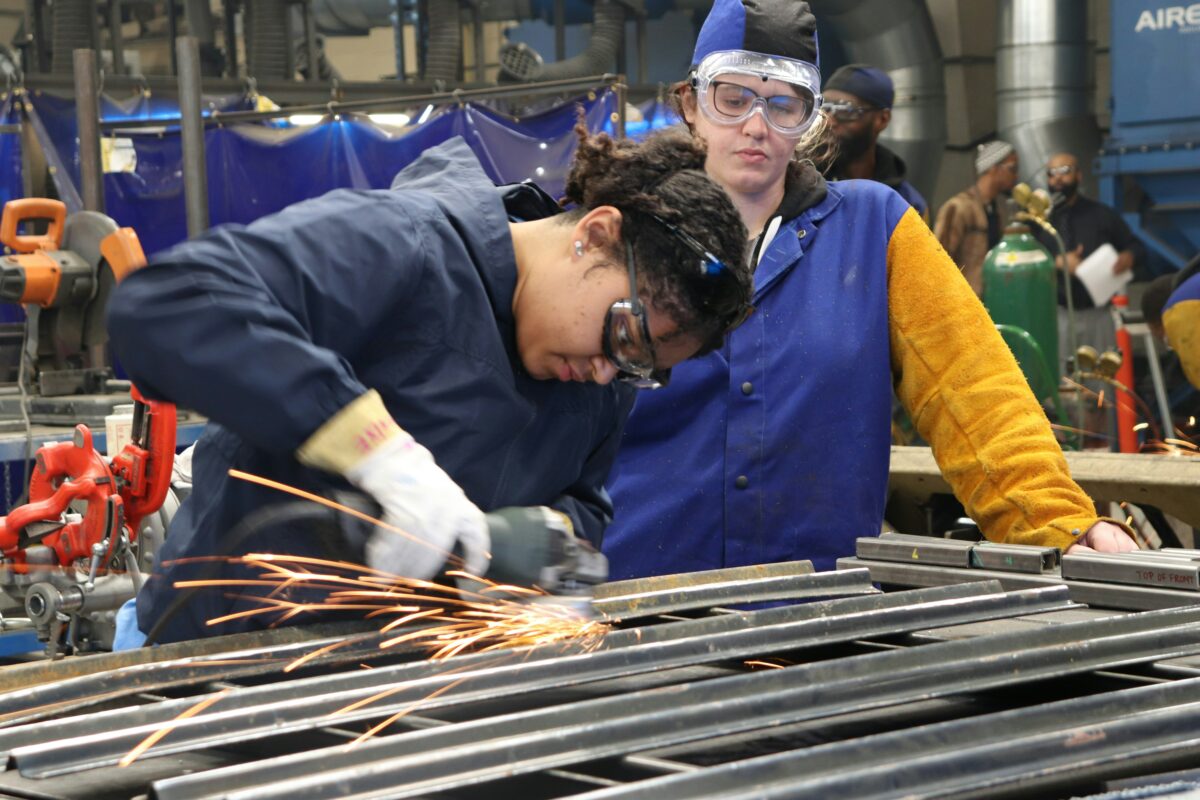Trade schools offer a valuable alternative to traditional college pathways, giving students hands-on skills and certifications for in-demand careers. Despite the practical benefits and shorter duration of trade school programs, dropout rates remain a concern. Understanding why students leave and how to improve retention can help strengthen trade school systems and better serve students looking for a clear path to skilled trades.
1. Understanding Dropout Rates in Trade Schools
The exact dropout rates vary by institution and program type, but on average, dropout rates in trade schools can range from 20% to 40%, according to industry research. This is notably lower than the dropout rates at four-year universities, which can reach as high as 50%. However, it’s still significant, especially given the direct career readiness that trade programs offer.
Different types of trade programs also exhibit different dropout patterns. Programs like HVAC (Radford M Locklin Technical Center), welding (Modern Welding School), and automotive technology (Knox County Career Center) often experience higher retention, while fields that require lengthy apprenticeships or extended on-the-job training, such as electrical or plumbing work, may see higher dropout rates due to the longer time commitment.
Trade schools offer a valuable alternative to traditional college pathways, giving students hands-on skills and certifications for in-demand careers. Despite the practical benefits and shorter duration of trade school programs, dropout rates remain a concern. Understanding why students leave and how to improve retention can help strengthen trade school systems and better serve students looking for a clear path to skilled trades.
2. Key Reasons for Dropouts in Trade Schools
Several factors contribute to dropout rates in trade schools, many of which parallel the issues seen in traditional college settings:
- Financial Challenges: Many students struggle to finance their trade education, particularly those from lower-income backgrounds. Although trade school programs are generally more affordable than four-year colleges, the costs can still be prohibitive without adequate financial aid or scholarships.
- Lack of Preparedness: Some students enter trade schools without a full understanding of the demands and rigors of hands-on training. If students are underprepared or lack basic foundational skills, they may become discouraged and eventually leave the program.
- Personal and Family Commitments: Unlike traditional college students, many trade school students are non-traditional, older, and may have family obligations. Balancing school with work and family responsibilities can become overwhelming, leading some to drop out to focus on other priorities.
- Mismatch of Expectations and Reality: Students sometimes enter trade programs with a romanticized idea of the field, only to find the day-to-day work challenging or not as expected. A career mismatch can lead to disengagement, which increases the likelihood of dropping out.
- Lack of Institutional Support: Trade schools, especially smaller or underfunded institutions, may lack robust student support systems like tutoring, career counseling, or mental health resources. Without adequate support, students may struggle academically or emotionally and choose to leave the program.
3. Efforts to Improve Retention Rates
To address dropout rates, many trade schools are implementing strategies aimed at helping students complete their programs and find success in their chosen fields. Some effective approaches include:
- Flexible Scheduling: Trade schools are increasingly offering evening, weekend, and online classes to accommodate students who need to work or manage family obligations.
- Increased Financial Aid and Scholarships: Recognizing that cost is a significant barrier, many institutions are partnering with industry groups and local governments to expand scholarship opportunities and provide financial assistance to students in need.
- Improving Career Counseling and Mentorship Programs: Career counseling and mentorship programs can guide students, helping them better understand the job market, required skills, and pathways within their chosen field. This support helps students clarify their career goals and stay motivated to complete their training.
- Emphasis on Job Placement and Internships: By partnering with companies to provide internships or job placement after graduation, trade schools can increase student engagement and motivation. Knowing that their program directly leads to a job can be a strong incentive for students to persist.
- Creating a Sense of Community: Trade school students benefit from a supportive environment, where they can connect with peers and instructors. Schools that foster community through clubs, study groups, or events help students feel more connected and supported, reducing dropout rates.
4. The Future of Trade School Retention
As Gen Z increasingly considers trade schools as an alternative to traditional higher education, institutions have an opportunity to further improve retention by addressing the unique needs and expectations of this generation. With a focus on flexibility, technology, and mental health support, trade schools can ensure they’re better equipped to help students succeed. By reducing dropout rates, trade schools can continue to attract and retain students ready to contribute to skilled trades. These changes benefit not only the students but also the industries they serve, ensuring a steady supply of skilled workers ready to meet the demands of tomorrow’s workforce.
Conclusion
Trade schools offer a practical and effective path to a successful career, but retention remains a critical factor in ensuring students reach their full potential. By addressing financial barriers, offering flexible schedules, and providing essential support systems, trade schools can help more students complete their programs and enter the workforce with confidence. If you are interested in learning more about trade school programs, their benefits, or specific options suited to your goals, visit Alternativestocollege.com. There, you’ll find resources to explore career-focused educational paths that align with today’s job market needs.

